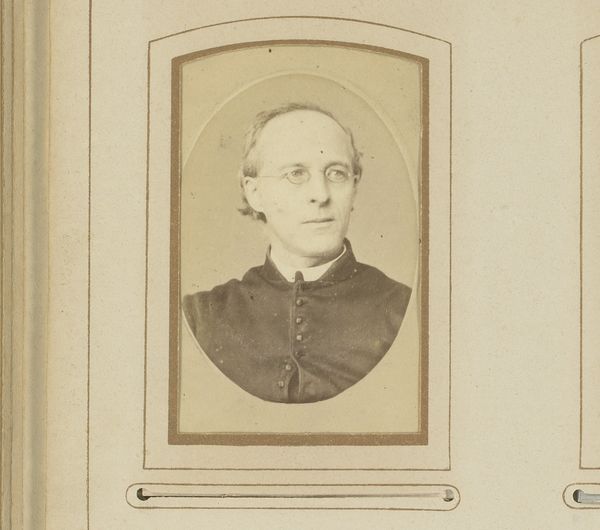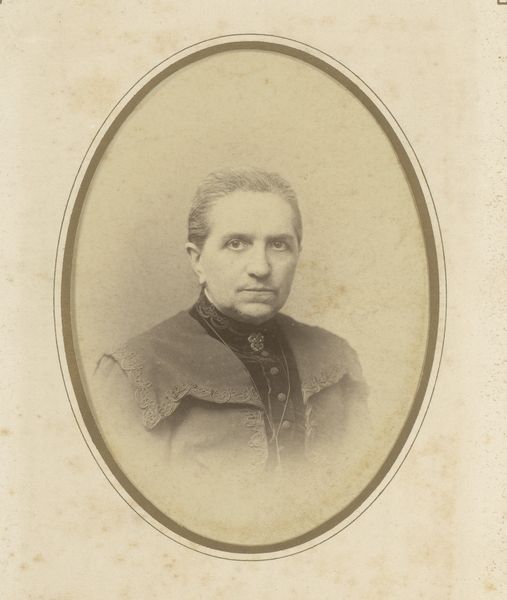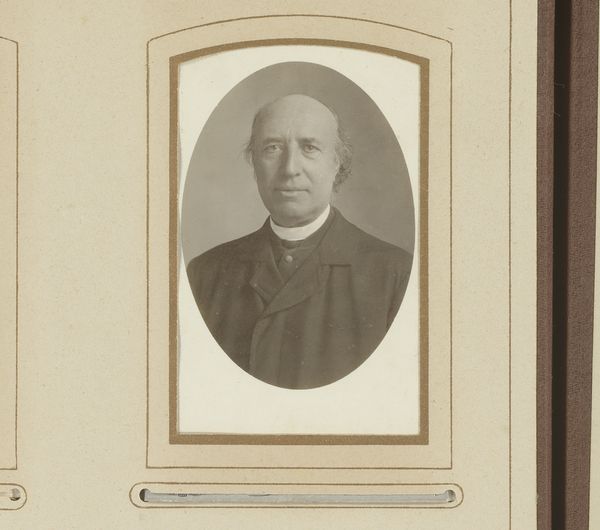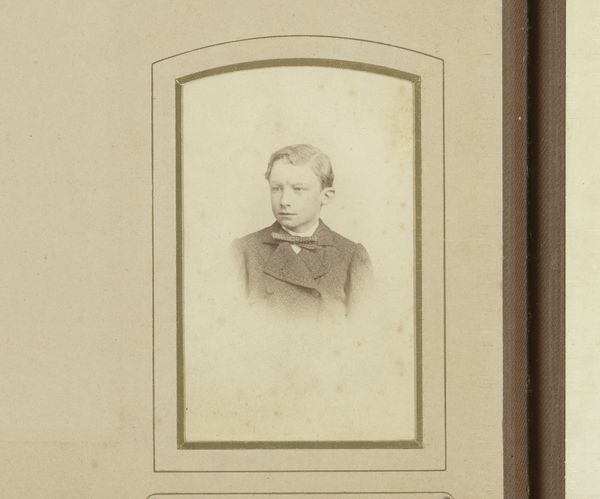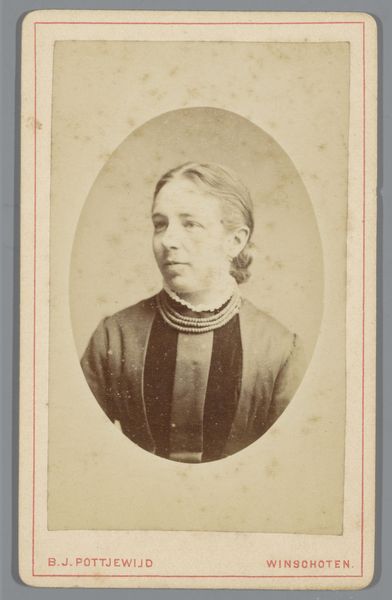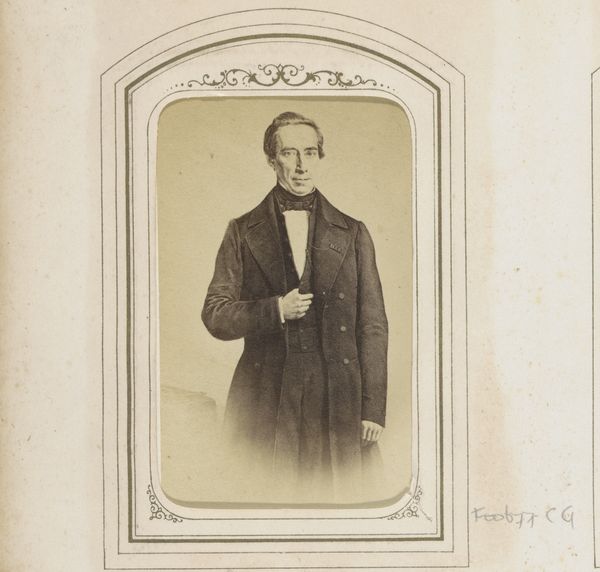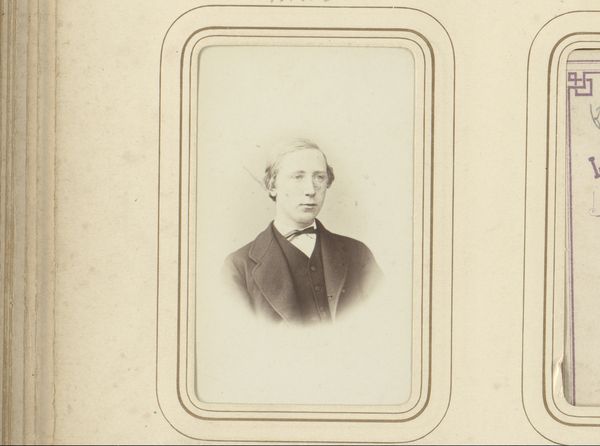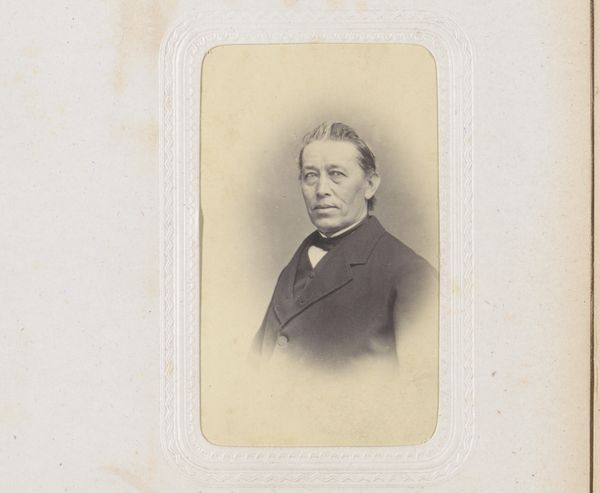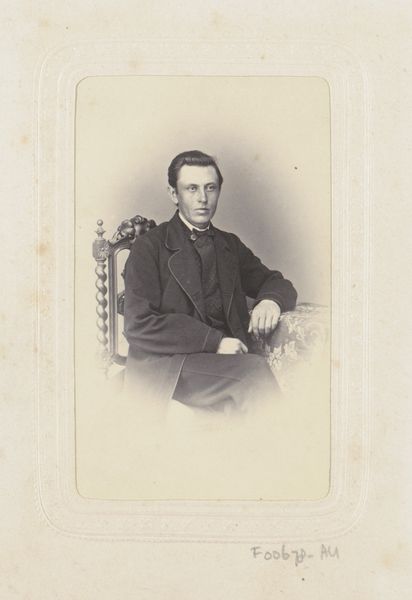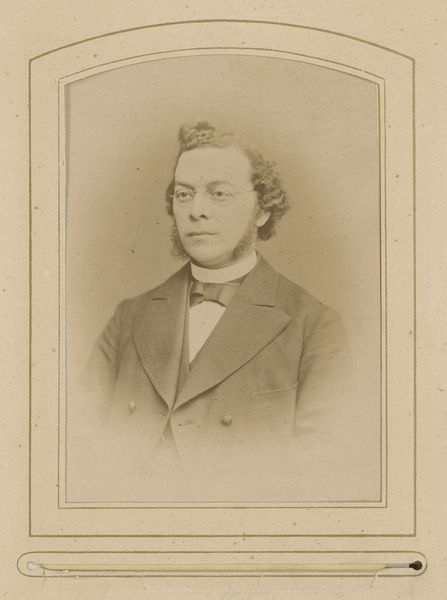
photography, photomontage
#
portrait
#
photography
#
photomontage
#
19th century
Dimensions: height 81 mm, width 50 mm
Copyright: Rijks Museum: Open Domain
Editor: This is “Portrait of a Man with Glasses” by Johannes Franciscus Hennequin, and it was created sometime between 1888 and 1900, using photography and photomontage. It's so intriguing; the man's gaze is very direct. How would you approach interpreting this work? Curator: Considering the materials and processes of late 19th-century photography is key. The rise of photography coincided with the Industrial Revolution. These portraits, reproducible and relatively affordable, democratized image-making. How do you think this impacted the art world at the time? Editor: I imagine it made portraiture accessible to a broader population, previously reserved for the elite who could afford painted portraits. Did this shift also affect how labor was viewed in art production? Curator: Absolutely. Photography required specialized labor - photographers, darkroom technicians, equipment manufacturers. It challenged the traditional notion of the artist as a singular genius. Think about the division of labor inherent in producing these photographic prints, from coating the plates to the final mounting. It wasn't solely about artistic skill; it was also about industrial processes. Notice too, that the portrait uses photomontage, layering images, cutting, pasting, manipulating the photograph's surface. Editor: Right. The man appears inserted into a decorative card... Does that reflect new marketing trends too? Curator: Exactly! Photomontage facilitated customization and personalization on a mass scale. Analyzing the materials—the chemicals used in developing, the paper, the adhesive—reveals much about the economics and consumption practices of the era. Editor: That makes so much sense. It really shifts how you see a seemingly straightforward portrait. Curator: Indeed. Focusing on materials and production illuminates the social and economic context that birthed this image, moving beyond just the sitter's likeness. Editor: I’ll never look at an old photo the same way again. Considering all those material processes gives it so much more depth!
Comments
No comments
Be the first to comment and join the conversation on the ultimate creative platform.
